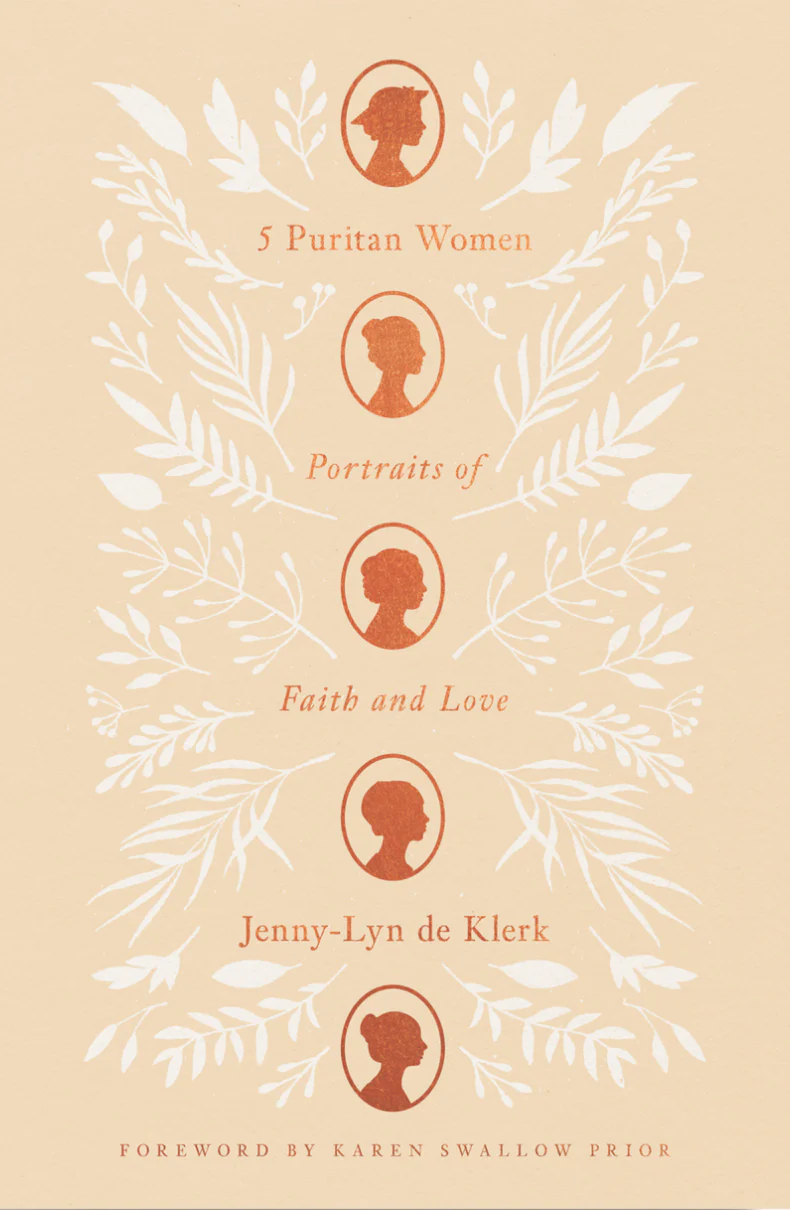
Jenny-Lyn de Klerk
Reviewed by: Elizabeth Downs
5 Puritan Women: Portraits of Faith and Love, by Jenny-Lyn de Klerk. Crossway, 2023. Paperback, 160 pages, $14.99. Reviewed by OP member Elizabeth Downs.
From the first pages of the introduction, de Klerk rightly commends the Puritans as those who “stand out in church history for being particularly skilled at applying the Bible to all areas of existence” (22) and as individuals worthy of our praise and emulation. Her work seeks to provide glimpses into the lives of five Puritan women: Agnes Beaumont, Lucy Hutchinson, Mary Rich, Anne Bradstreet, and Lady Brilliana Harley.
Her portraits are vividly and succinctly written, bringing to life the devotional practices of these women, namely Bible memorization, fellowship, meditation, prayer, and spiritual conversation. She is particularly adept at illustrating the ebbs and flows of these women’s fervor, which helps readers see beyond popular puritanical caricatures to the vital spirituality of their actual lives. Like the women she profiled, de Klerk affirms the Lord’s goodness in the face of loss and suffering. I am confident these stories will spur readers on in their walks.
That being said, I believe this book must be read with discernment. In the introduction, de Klerk recognizes the propensity of modern scholarship to either bend or erase women’s narratives to fit modern historians’ goals: “The proclamation to listen to women, believe women, and appreciate women as unique individuals is sometimes only applied to those who can fit within our current culture’s belief system without too much force” (20). Setting aside the fact that the author does not interrogate the problematic aspects of the believe-women movement, her work itself does not escape an overly modern framing. One illustrative quote from the conclusion states:
Overall, though these women did not have the same credentials or draw the same crowd as the professional pastors they interacted with, we would be remiss to ignore the fact that their ministry was just as effective as their more famous counterparts: they were the female soul doctors of their time. In fact, their preaching was even more moving, their teaching more relevant, and their shepherding more empathetic when it came to their own family members, for it was all given in the context of their life together. (135)
I understand the author’s desire to elevate the importance of women in the work of ministry—it is not always given the weight it deserves. However, this point does not necessitate contrasting ministers with mothers, aunts, and sisters in the faith. They work in beautiful concert in God’s good plan, a symphony that I am confident these women rejoiced to be a part of.
The two above quotes are not characteristic of the entire work, but they stand behind its more subtle statements and conclusions. This second quote also dovetails with my most serious critique: the overall lack of discussion of the role of the church in these women’s lives. I can recognize that the author’s project was to showcase their personal piety in familial settings; however, to only hint at how these practices existed within and were strengthened by their ecclesiastical context tells at best a partial story and at worst an ahistorical one. Moreover, it represents a lost opportunity to illustrate how private piety practiced within a robust ecclesiastical life is the antidote to the individualist—and lonely—strain in many church circles, both broader evangelical and our own.
November 23, 2025
November 16, 2025
November 09, 2025
November 02, 2025
October 26, 2025
October 19, 2025
October 05, 2025
Raising Sexually Faithful Kids and
Parenting Boys and Girls in a Gender-Confused World
© 2025 The Orthodox Presbyterian Church